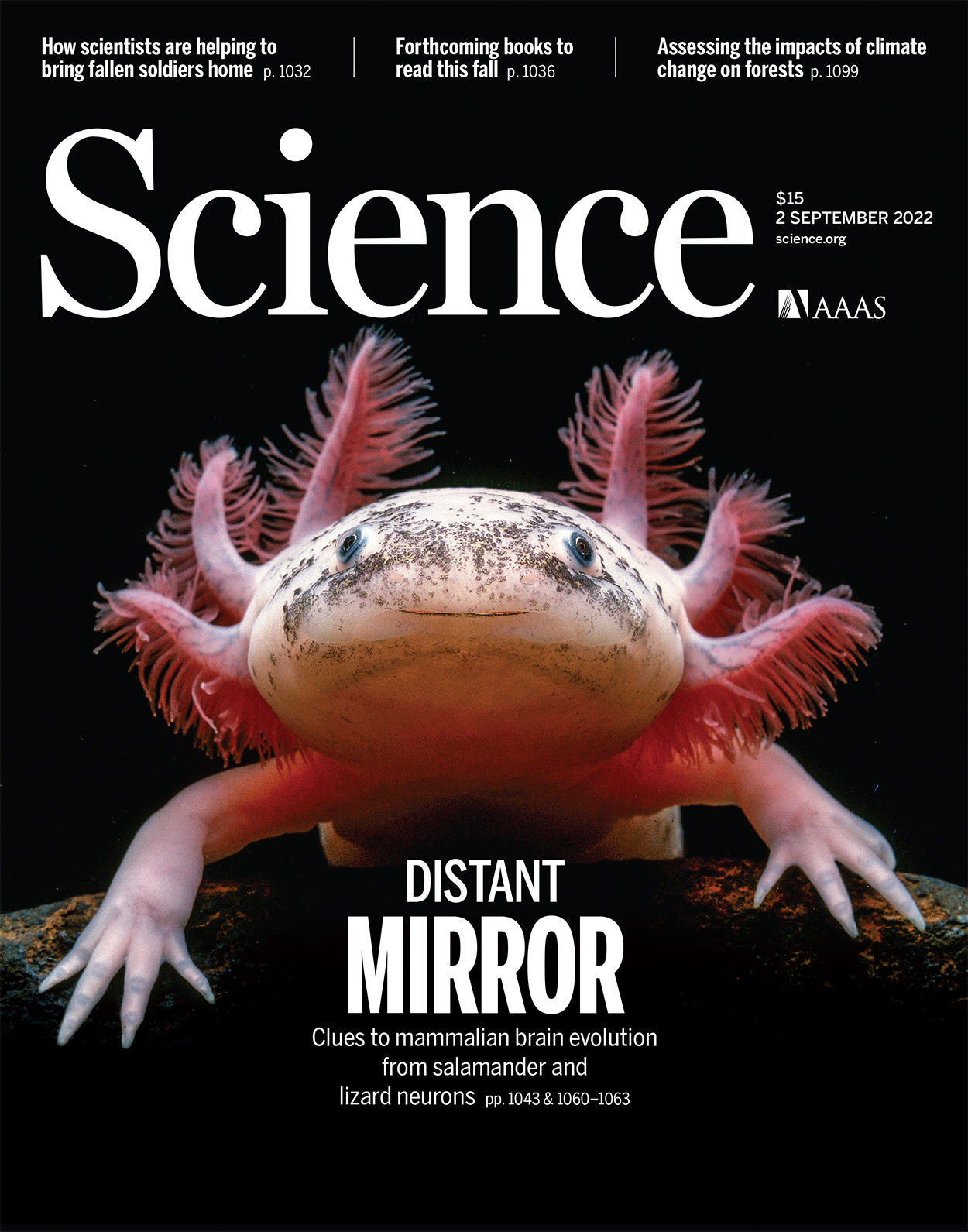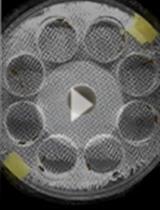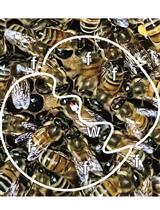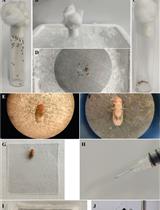- EN - English
- CN - 中文
Caste Transition and Reversion in Harpegnathos saltator Ant Colonies
Harpegnathos saltator蚂蚁群落中的种姓转换和回归
(*contributed equally to this work) 发布: 2023年08月20日第13卷第16期 DOI: 10.21769/BioProtoc.4770 浏览次数: 1452
评审: Khyati Hitesh ShahKevin Haight
Abstract
Living organisms possess the ability to respond to environmental cues and adapt their behaviors and physiologies for survival. Eusocial insects, such as ants, bees, wasps, and termites, have evolved advanced sociality: living together in colonies where individuals innately develop into reproductive and non-reproductive castes. These castes exhibit remarkably distinct behaviors and physiologies that support their specialized roles in the colony. Among ant species, Harpegnathos saltator females stand out with their highly plastic caste phenotypes that can be easily manipulated in a laboratory environment. In this protocol, we provide detailed instructions on how to generate H. saltator ant colonies, define castes based on behavioral and physiological phenotypes, and experimentally induce caste switches, including the transition from a non-reproductive worker to a reproductive gamergate and vice versa (known as reversion). The unusual features of H. saltator make it a valuable tool to investigate cellular and molecular mechanisms underlying phenotypic plasticity in eusocial organisms.
Key features
• H. saltator is one of few ant species showing remarkable caste plasticity with striking phenotypic changes, being a useful subject for studying behavioral plasticity.
• Caste switches in H. saltator can be easily manipulated in a controlled laboratory environment by controlling the presence of reproductive females in a colony.
• The relatively large size of H. saltator females allows researchers to dissect various tissues of interest and conduct detailed phenotypic analyses.
Keywords: Ant (蚂蚁)Background
Eusocial insects (ants, bees, wasps, and termites) live in colonies in which all individuals have a high genetic relatedness, while only one or few individuals reproduce (Chapman et al., 2000; Trontti et al., 2005; Loope, 2015). The reproductive (queens and also kings in termites) and non-reproductive (workers) castes in a colony display different phenotypic traits including differential behavior, reproduction, metabolism, and lifespan, a phenomenon known as polyphenism (Simpson et al., 2011; Kapheim et al., 2012). Eusocial insects offer a valuable experimental model to compare gene expression between castes and to identify the key genes as causal factors determining differential phenotypes at the organismal level (Colgan et al., 2011; Bonasio et al., 2012).
Harpegnathos saltator (commonly known as the Indian jumping ant) is an ant species originating from India. These ants display an unusual feature: individuals can transition from non-reproductive workers to reproductive pseudo-queens (also called gamergates) (Liebig et al., 2000; Monnin and Peeters, 2008; Sieber et al., 2021a). When the queen is absent from a colony, workers can switch their caste and show queen-like traits: minimal movement, staying inside the nest, active ovaries, and production of eggs. In contrast, some workers show active movement in the nest to take care of the progeny, while others hunt and forage. Furthermore, workers have small ovaries and rarely produce eggs.
A colony with gamergates is as stable as a queen colony (Opachaloemphan et al., 2021; Penick et al., 2021). Additionally, gamergates can be experimentally converted back to workers (to distinguish, they will be referred to as revertants) (Penick et al., 2021). This process is associated with the reversion of phenotypic traits: revertants display worker-like physiology, behavior, and aging (Penick et al., 2021; Yan et al., 2022). With a high-quality genome (Bonasio et al., 2010; Shields et al., 2018), multiple studies have been performed in H. saltator to analyze caste-specific transcriptomes and methylomes at tissue and/or single-cell levels (Bonasio et al., 2012; Sheng et al., 2020; Sieriebriennikov et al., 2021). H. saltator is one of the three species (along with Oocerea biroi and Solenopsis invicta) in which reverse genetics was applied in ants using the CRISPR-Cas9 system (Trible et al., 2017; Yan et al., 2017; Chiu et al., 2020). This experimental paradigm has helped to identify cellular and molecular processes required for the establishment of caste identity (Gospocic et al., 2021; Opachaloemphan et al., 2021) and determine the role of neuropeptides, hormones, and transcription factors in regulating caste-specific behaviors, and the role of insulin signaling in reproduction and longevity (Penick et al., 2014; Gospocic et al., 2017 and 2021; Yan et al., 2022). Here, we provide a detailed protocol explaining the experimental framework we have used on H. saltator to induce caste transition and reversion, the identifiable and quantifiable parameters to define each caste, and the techniques for tissue dissection and staining.
Materials and reagents
Oil-based paint markers (Uni-Paint, catalog number: 63721); store at room temperature
Entomology featherweight forceps (BioQuip, Featherweight Forceps, catalog number: 4748)
Dissection forceps (Dumont #55, catalog number: 11295-51)
Wood flour (System Three Resins, System Three); store at room temperature and dry
Dental plaster (Kulzer, Modern Materials Lab Stone Blue Type III); store at room temperature
Small plastic container (Pioneer Plastics, catalog number: 028C, inner dimensions: 9.52 cm × 9.52 cm × 7.77 cm)
Medium plastic container (Pioneer Plastics, catalog number: 079C, inner dimensions: 18.89 cm × 13.49 cm × 9.53 cm)
Crickets (Ghann’s Crickets, Live Crickets " and ¼", catalog number: C14 and C38, respectively)
Cricket chow (Ghann’s Crickets, Ghann’s Cricket chow, catalog number: FD-GCC); store at room temperature. Mix with apples and potatoes for feeding crickets
Cover glass for the chamber (dimensions: 10.0 cm × 9.0 cm × 0.5 cm)
Fluon (Fluorogistx, TeflonTM PTFE DISP 30 Fluoropolymer Dispersion, catalog number: D14783090); store at room temperature
2" Poly foam brush (Jen Manufacturing, catalog number: JNSN846)
Multipurpose foam mats [American Floor Mats, Soft Floors Interlocking Tiles, dimensions: 9.0 cm × 7.5 cm × 1.0 cm with an additional area (bulge) of 2.3 cm × 1.5 cm × 1.0 cm for the nest entrance]
16% paraformaldehyde (PFA) (Electron Microscopy Sciences, catalog number: 15710); store at room temperature
Triton X-100 (Sigma, catalog number: X100); store at room temperature
Alexa FluorTM 488 Phalloidin (Thermo Fisher, Alexa FluorTM, catalog number: A12379); store at 4 °C and protected from light
DAPI dye (Tocris, catalog number: 5748); store at -20 °C
Aluminum foil (Reynolds Wrap)
Single sided iSpacer 0.5 mm deep (SubJin Lab Optical Clearing Innovation, iSpacer, catalog number: IS008)
Microscope slides (Fisher Scientific, catalog number: 12-550-143)
Microscope cover glass (Fisher Scientific, catalog number: 12-542A)
Mounting solution (Thermo Fisher, Slow-FadeTM Gold Antifade mountant, catalog number: S36936); store at room temperature and protected from light
Black dissection Petri dish (Pyrex, catalog number: DD-90-S-BLK)
Sodium chloride (NaCl) (Fisher Scientific, catalog number: S271); store at room temperature
Potassium chloride (KCl) (Fisher Scientific, catalog number: 217); store at room temperature
Sodium phosphate dibasic (Na2HPO4) (Fisher Scientific, catalog number: S374); store at room temperature
Potassium phosphate monobasic (KH2PO4) (Fisher Scientific, catalog number: P285); store at room temperature
Hydrochloric acid (HCl) (Fisher Scientific, catalog number: A144S); store at room temperature
1× PBS pH 7.4 (store at room temperature, see Recipes)
Equipment
Temperature-controlled incubator (Percival Scientific, catalog number: I-36VL)
Tube rotator (Thermo Scientific, Tube Revolver, catalog number: 11-676-341)
Software
Fiji (ImageJ, https://imagej.net/software/fiji/) (Schindelin et al., 2012)
Procedure
文章信息
版权信息
© 2023 The Author(s); This is an open access article under the CC BY-NC license (https://creativecommons.org/licenses/by-nc/4.0/).
如何引用
Readers should cite both the Bio-protocol article and the original research article where this protocol was used:
- Opachaloemphan, C., Carmona-Aldana, F. and Yan, H. (2023). Caste Transition and Reversion in Harpegnathos saltator Ant Colonies. Bio-protocol 13(16): e4770. DOI: 10.21769/BioProtoc.4770.
- Yan, H., Opachaloemphan, C., Carmona-Aldana, F., Mancini, G., Mlejnek, J., Descostes, N., Sieriebriennikov, B., Leibholz, A., Zhou, X., Ding, L., et al. (2022). Insulin signaling in the long-lived reproductive caste of ants. Science 377(6610): 1092–1099.
分类
神经科学 > 行为神经科学 > 学习和记忆
您对这篇实验方法有问题吗?
在此处发布您的问题,我们将邀请本文作者来回答。同时,我们会将您的问题发布到Bio-protocol Exchange,以便寻求社区成员的帮助。
Share
Bluesky
X
Copy link













